The corner of the south-west France the British haven't discovered
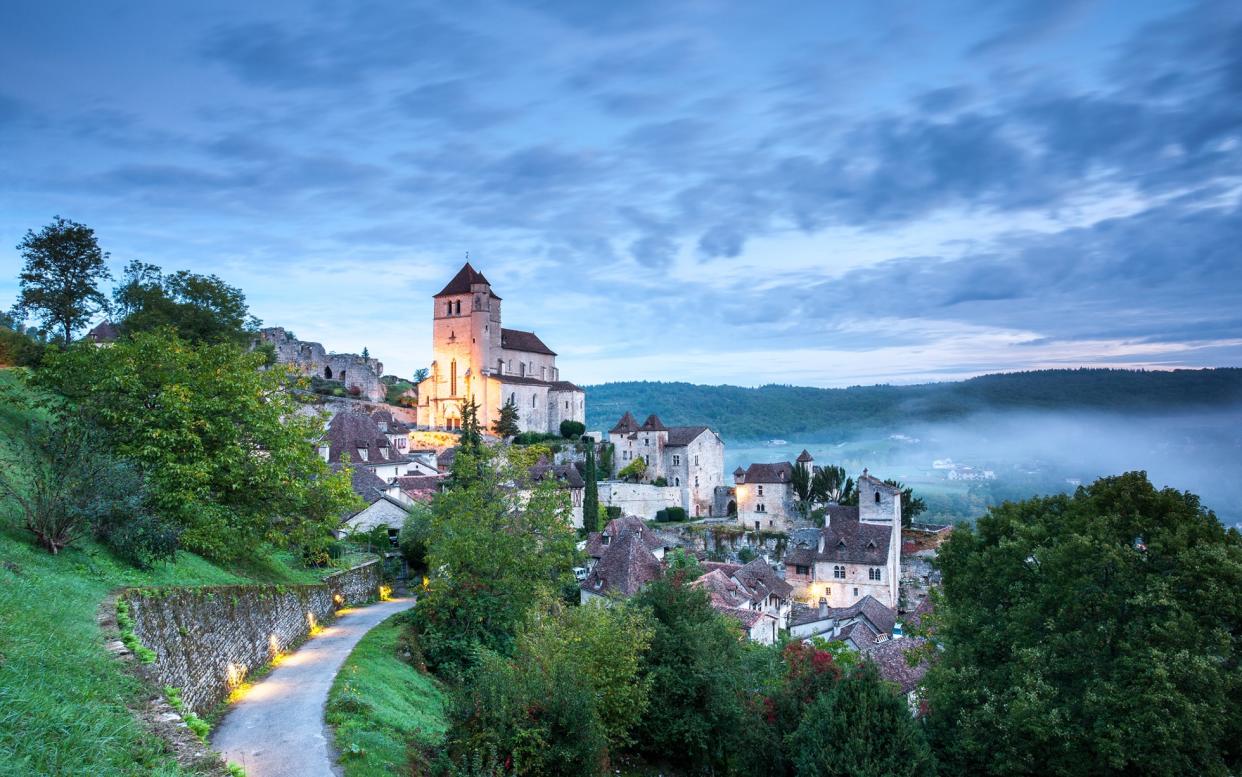
Let’s put it this way: I don’t wish camper vans to be swept from the face of the earth, merely from wherever I happen to be. Earlier this month, that was in the Lot valley in south-west France, east of Cahors. This is beautiful, but the road is narrow. There’s the river down below on one side, and cliffs rising on the other, frequently with overhangs. So camper vans, usually full of jolly Dutch people, would pull into the middle of the road to avoid the overhang, thus edging oncoming traffic towards the drop to the river. This was no place for a person with the head for heights of a halibut.
I would get past, just – and with my wing mirror cracked. I would swear vigorously. Then I would stop, because there was another one coming on. Oh yes.
Apart from that I love the Lot, both the river valley and the country flanking it. Deeply rural, it offers light geo-drama: the Lot river and its tributary, the Célé, slice deep enough into the Causses limestone plateau for most tastes. And the region is shot through with courage – farming has ever been tough around here; so was the Resistance – and intelligence, at once entrepreneurial and artistic. The Lotois have been painting for 30,000 years.
Down from the plateaus, Figeac is where you start. Where I started, anyway. It appears a rustic spot (pop: 10,000) whose principal concern should be sheep. But this is the Lot, so the town has a vast aeronautics set-up, memories of the fellow who founded Egyptology, and also of one of Hollywood’s key Latin lovers.

I have long claimed Figeac to be the finest small town in France, small towns themselves being the best way to experience a country. Villages may be beguiling but are shut by 7.30pm. Cities are invigorating but avoid eye contact and steal your wallet. Smaller towns – population from 2,500-15,000 – have a human scale. There’s much hailing of one another from café terraces; it takes two hours to chat your way through the market to the strawberries. But, being towns, they are also vital, will provide fun and a drink at midnight, and don’t stare at strangers. Best of all worlds, then.
And Figeac is the best of the best, not least because monks and merchants, peasants and nobles have been dropping down into the place since the Middle Ages. Wandering the centre is ambling through the structures of French history. Naturally, city fathers planned to demolish all the antique stuff in the Fifties and Sixties, to make way for modern housing and the motor car. Then, at the 11th hour, they suddenly got the hang of heritage. The old was buffed up, people moved back in – so we may still stroll tight, sinuous streets before stone-arched shop façades, half-timbering, feverish Renaissance window decoration and cat-lurking crannies. As I did so, children’s cries floated from a primary school, uncertain flute practice emerged from an open window and I developed a thirst, first for beer, then for Egyptology. I slaked both within 25 yards, at the Bar Champollion, then the Champollion Museum.
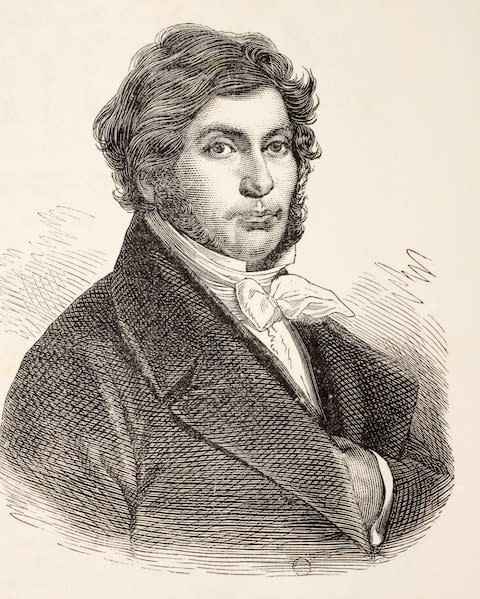
Jean-François Champollion, it quickly becomes clear, is your main man in Figeac. In 1822, he cracked hieroglyphics, thus making comprehensible ancient Egyptian life (and the Rosetta Stone, of which there is a giant reproduction in black granite in the courtyard nearby). Champollion remains a key national figure in France as maybe he wouldn’t be in Britain, not having appeared on a reality television show or played football for anyone.
The museum tells Champollion’s tale and then the entire history of writing, from hieroglyphics and cuneiform onwards. I’d no idea that the Phoenician alphabet was the origin of almost all other alphabets, Arabic through Greek and Latin, nor that Babylon’s 18th-century BC Hammurabi legal code was etched on a big bollard.

Figeac is more doubtful about its other famous son, the chain-smoking Charles Boyer. The cinema is named after him and there is a plaque on Boulevard Juskiewenski by what was his father’s agricultural supplies shop; it’s now an electrician’s. That’s all, and a bit light, I’d say, for the inter-war world’s highest-earning film star, partner of Garbo, Bergman and Bacall, and all-round Brad Pitt of the era. I’ve warmed to the chap ever since I heard that he committed suicide two days after his (English) wife’s funeral in 1978. He couldn’t live without her.
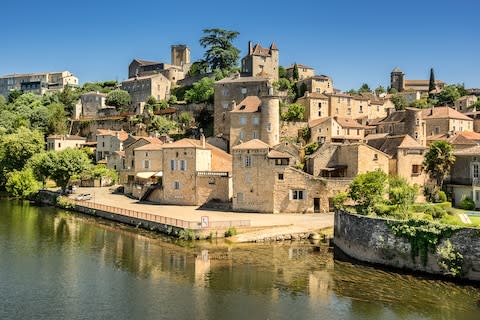
So I climbed out of Figeac to the farmland above, and on to Cardaillac, a once-fortified village. I walked up the tiny main street. “You the Englishman?” called Annie Mage from her wooden balcony. We had coffee at her kitchen table. Annie is a life force. She looks like a farmer, is a retired history teacher, knows everything about farming and history – and recounts it around the musée éclaté (“scattered museum”) which she and fellow volunteers have created throughout the village. They’ve restored the past to certain present village buildings. Thus the early 20th century is recalled in a village house, in the primary school (where schoolbooks of the time expected primary kids to have mastered compound interest), a clog-maker’s, a nut-oil mill, a chestnut-smoking shed and elsewhere besides. “Chestnuts were a staple,” said Annie. “The French countryside had fear of hunger as a constant until recently.” (The museum is open every afternoon in summer, and any time by ringing 033 5 65 40 10 63.)

The Célé river flows out of Figeac and, pretty soon, out of time, provides a running commentary between cliffs with no thought for today. Here and there, the valley broadens to accommodate pastures and stone villages apparently grown organically. In Marcilhac, the church clings to the ruins of a great abbey in the lee of rising rocks – a natural/supernatural play-off. The church’s devotional visitors’ book had recent words from a grateful woman: “It’s my birthday today. Thank you God for my 57 years and for being my guide and my blessing.” Directly underneath, in a different hand: “Don’t mention it, (signed) God.”
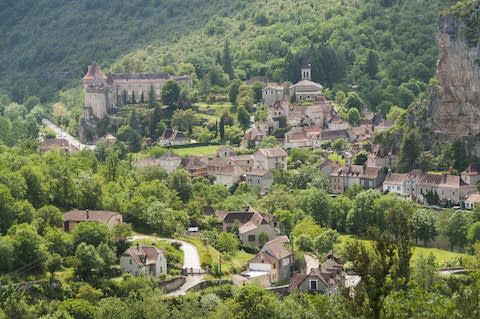
Then the valley tightens, to open slightly for Cabrerets. Here is a bright-eyed spot sufficient for the abundance of visitors arriving for the Pech Merle cave, halfway up the rocks. They come to see how our forebears managed wall art 29,000 years ago. The answer is: “Brilliantly.” Pech Merle’s are the most powerful cave paintings in France accessible in the original, those at Lascaux and Chauvet-Pont-d’Arc being available only in repro form.
It’s an up-and-down labyrinth, garnished with unearthly rock formations from which, in any decent horror movie, would surge Stone Age sheep with bi-plane wings and teeth like Sabatier knives. Some way in, the fossilised footprint of a teenage boy had scrunched the ground. Elsewhere, painted figures – bulls, mammoths, reindeer, caricatured women (“with ultra-generous chests”, said the guide) – swarmed, as if anxious for release from the rock. I’d previously visited with Peter Barrett, Britain’s leading nature artist. His prehistoric forerunners impressed him: “The lines are so economical and sure. Look at the lightness of the legs; they did them perfectly – and by the light of only a flickering flame.”
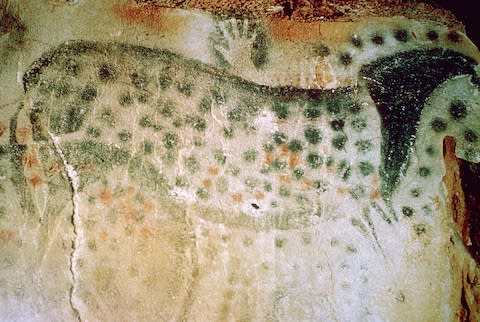
This time, even the braying tots in my group couldn’t staunch awe before the cave’s greatest work: two robust dotted horses. They stood rump-to-rump, slightly overlapping and one with, rather oddly, a pike-fish worked into its back. Stencilled hands surrounded the beasts, as if someone was waving from behind. It was dynamic and moving. “Why did these people draw?” Peter Barrett had asked. “Why does anyone draw? Perhaps simply because a subject is beautiful.” Paleontologists prefer explanations involving shamanism (another way, I reckon, of saying “search me, mate”). I do hope Peter’s right. Pech Merle restricts visitors to 700 per day, so book a week ahead (en.pechmerle.com).
Just along the road, the Célé joins the broader Lot. I turned upstream, to St-Cirq Lapopie. This, the Lot’s star turn, imposes a sense of occasion. It is so alarmingly right that it cannot have emerged, haphazard, from the Middle Ages. Except that it has. The village is draped over rocks standing proud from the plateau. It marries the contours to the top, where monumental church and castle ruins dominate the valley, as they should.
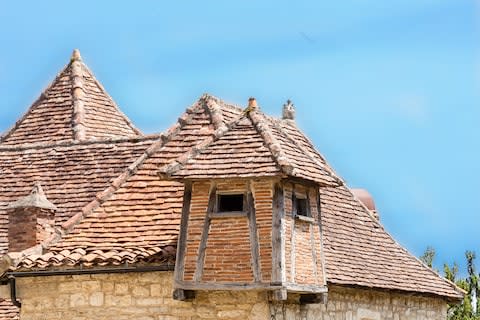
Near vertical streetlets and venerable buildings cram in. Peasants and pageants are but a breath, and aeons, away. Instead, we have artists, restaurants and tourists, which is also pretty good. When writer and founder of surrealism André Breton showed up, post-war, he bought the village’s oldest house immediately. “I ceased to wish myself elsewhere,” he said: as pompous as you’d expect from an anarcho-surrealist, but clear enough.
François Vinel was the last of the wood-turners who once made St-Cirq’s parallel celebrity as creators of wooden barrel taps. Next door, Dutchman Rob Jansen’s shop had as fine a choice of Indian finery as you’ll find in the Lot. And, up top, my favourite of all the artists, Christian Destieu – in situ for 40 years – displayed works painted on clay, itself on wire netting. He was charming; they were outstanding.
In truth, art is a seam along this bit of the Lot valley. Further upstream, Cajarc has the Georges and Claude Pompidou Art Centre. The French president and his wife, ardent fans of contemporary art, had a holiday home above the sunlit little town. The centre was an obvious tribute. Don’t miss it.
By night, I wandered St-Cirq some more. In streets low-lit and empty, one could just about imagine oneself into a medieval mould. Or that may have been the foie gras, Quercy lamb, goat’s milk cheese, apples and plum liqueur pud – and a bottle of Cahors malbec: sufficient, certainly, to knock anyone back to the Middle Ages.
Next morning I drove away past a herd of camper vans assembled on a riverside car park. I edged past very gently, so as not to startle them into action and so ruin everything.
Getting there
Shortest rail trip London-Cahors is 9hr 44mns, from £85 return (0844 848 5848; oui.sncf). Ryanair (ryanair.com) flies from Stansted to Brive, Toulouse and Bergerac and from East Midlands and Liverpool to Bergerac until October 2018 and from April 2019. EasyJet (easyjet.com) flies to Toulouse from Gatwick, Luton, Liverpool and Bristol.
Where to stay and eat
In Figeac, try the Hotel Quatorze (le-quatorze.fr, doubles from £60). Eat in high style at the Dinée-du-Viguier (dinner menus from £30). Above Cabrerets, Noct'en-Bulles beds you down beneath the stars in half-transparent, high-class plastic bubbles (noct-enbulle.fr; B&B double £132). Eat in the village at La Roue, my pick of the two valleys' restaurants (see Facebook; menus from £20). And pick of the hotels? Le St Cirq opposite St Cirq Lapopie - splendid views, terrific staff, fab spa and pools, brand new but feels venerable, flanked with vines, pasture, cliffs, sheep and a donkey (hotel-lesaintcirq.com; doubles from £78). Dine up in the village at Le Sombral (lesombral.com; dinner menu from £24) or Le Gourmet Quercynois (restaurant-legourmetquercynois.com; from £20).

